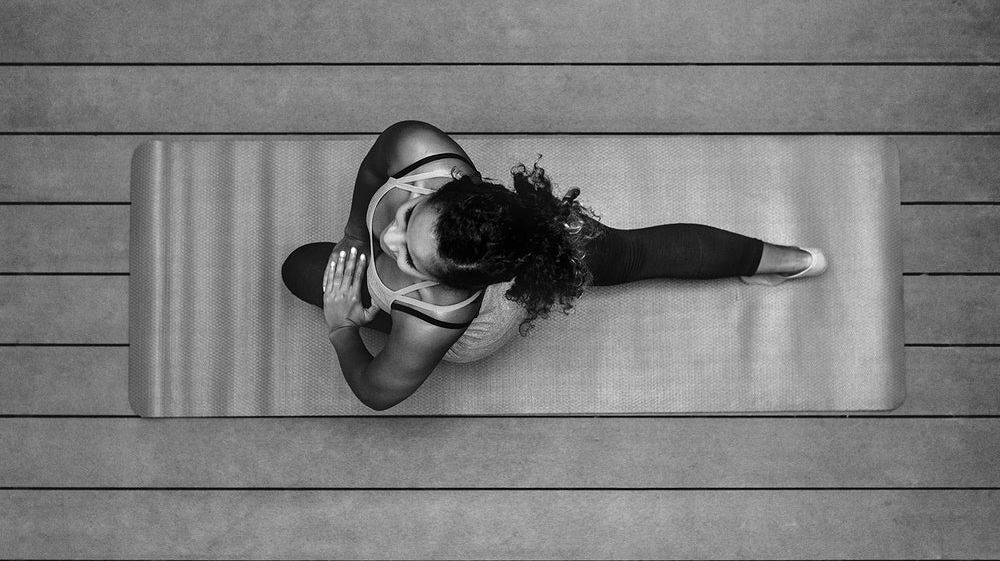Physical Activity

While engaging in physical activity may be the last thing some women want to do while experiencing Nausea and Vomiting of Pregnancy (NVP), light exercise may reduce NVP symptoms by improving digestion, fatigue, hydration (by helping women better tolerate fluids), and improving women’s ability to obtain better sleep.
Light exercise may also improve other early pregnancy symptoms that can contribute to nausea and vomiting.
Women need to start very slow if attempting to try this method for control of their NVP symptoms.
Light walking around the house can be a good place to start, with women increasing this activity based on how they feel. It is is also very important women remain hydrated, eat enough food to keep energy levels stable, and stop any activity if they feel dizzy, faint, pain, or worsening nausea.
Women also need to talk to their HCP before engaging in any form of physical exercise while experiencing moderate to severe NVP.
Background
Exercise as a method for specifically managing or improving Nausea and Vomiting of Pregnancy (NVP) symptoms has only been limitedly studied; however, it is often mentioned as a possible beneficial strategy. It may also serve as a good distraction method.
Exercise can improve many assessed contributing factors to NVP; therefore, while some form of physical exercise is unlikely to completely relieve symptoms, it could reduce their severity, albeit temporarily.

However, in some women with moderate to severe NVP, any type of physical movement may be very difficult. Women should decide if they want to try light walking and see if it reduces their symptoms.
Women should also keep in mind that even if walking (or any form of exercise) does not work at first, symptoms – along with management strategy – can change as NVP progresses.
Note: Exercise is safe during early pregnancy. Read more detailed information here.
General Research
It is possible that light to moderate physical exercise – while improving mood, blood flow, digestion, and fatigue – could temporarily improve NVP symptoms, even with a single moderate exercise session (i.e. walking), if tolerated.
One study specifically noted that exercise during the first trimester of pregnancy was significantly associated with a decreased likelihood of reporting NVP in the second trimester of pregnancy. However, details regarding initial severity of NVP in these women was not indicated.
An additional study indicated that pregnant women’s perceived nausea may be reduced with outdoor activity compared with gym-based exercise. This may be due to fresh air, which also leads to better controlled breathing, a common method for fighting nausea waves.
While yoga has not been specifically studied on its own for reducing NVP, it has been shown to decrease nausea and vomiting symptoms in women receiving chemotherapy, including in comparison to some antiemetics (anti-nausea medications).

Women should note that while exercise can improve digestion (after the activity) which may aid in nausea relief, strenuous exercise may make gastrointestinal symptoms worse. Further, certain types of exercise (some yoga positions, burpees, etc.) can make acid reflux worse which can be a major contributor to nausea and vomiting in early pregnancy.
Women do not need to engage in intense activity; some women may find that simply walking (aimlessly) throughout their home staves off nausea. Women should wear nonskid socks if they have tile or hard wood floors and consider adding headphones/music to accompany this movement.
Fatigue and Hydration
Fatigue, and the risk of dehydration, are major factors preventing women from engaging in any physical activity while experiencing NVP. However, physical exercise can improve these symptoms as well, thereby improving nausea, and women. Further, exercise does not have to be intense enough to where women sweat. Note: Women should talk to their HCP before engaging in any physical exercise during early pregnancy.
Since fatigue and hydration are often combined with the presence of nausea and vomiting, controlling these symptoms may be an effective approach to managing NVP. This would also improve tolerance for physical activity.
NVP and fatigue are directly associated, in both directions. Although NVP in the first trimester has numerous potential causes, fatigue has been shown to dramatically worsen nausea, and severe nausea worsens fatigue, which significantly affects a woman’s ability to manage either symptom.
In general, exercise during pregnancy has been documented to improve symptoms of fatigue and leads to better sleep (read Exercise). Exercise also improves alertness, circulation, and digestion, which may allow women to better hydrate and then eventually – to eat.
Adequate hydration also helps increase blood pressure and appetite, assists in early pregnancy blood volume expansion, and improves an individual’s tolerance for physical activity.

Of note, research has also shown the total amount of sleep women obtained the previous night was much more beneficial than daytime napping in combating fatigue. Therefore, if women focus on good sleep hygiene habits and obtain a full night’s sleep, they may better tolerate not only light physical exercise, but their NVP symptoms as well.
Further, although not necessarily applicable to pregnancy nausea, exercise has been studied in patients with chemotherapy-induced nausea. Exercise was confirmed to improve both fatigue and the individual's ability to sleep.
Action
Women need to talk to their HCP before engaging in any form of physical exercise while experiencing moderate to severe NVP, especially women who may not be eating or drinking enough. Additionally, women should not force themselves to exercise if it makes them feel worse.
Women do not have to intensely exercise; light activity – such as walking/stretching – could have beneficial effects without risking dehydration or other disabling side effects.

Women should start simply with walking around the house and then slowly and gradually increase this type of activity based on how they feel. Women still need to make sure they are adequately hydrated and eating enough food to keep energy levels stable; they also need to stop any activity if they feel dizzy, faint, pain, or worsening nausea.
In general, women should avoid bending forward and crunching the abdomen with any form of exercise, yoga, stretches, or resistance training. Any type of pressure on the stomach could increase nausea.
Women should also take caution walking up and down the stairs if they feel dizzy or faint. Further, if women experiencing dizziness while changing position, such as from lying down to sitting, or from sitting to standing, this indicates a sudden drop in blood pressure. Although likely from dehydration or the lack of food and energy, women should mention these episodes to their HCP.
Women should also consider sharing their NVP experience below, especially if they used light physical activity to help manage their symptoms.
Partners/Support
Partners, family members, and friends can support pregnant women by engaging in light physical activity with them during early pregnancy. This also provides a safety net for women who may get nauseous, feel dizzy, or need to sit/rest during a walk, especially if outside or at a gym.
Partners can also help remind pregnant women to take slow deep breaths, walk slowly, remain hydrated, and try to eat a nutritious meal (if possible) soon after the activity. Partners/family members can also help her keep track of whether walking/light activity helps her symptoms.
Resources
Nausea and Vomiting of Pregnancy: Committee Opinion 189; January 2018 (American College of Obstetricians and Gynecologists)
Morning Sickness: Nausea and Vomiting of Pregnancy (American College of Obstetricians and Gynecologists)
Pregnancy sickness (nausea and vomiting of pregnancy and hyperemesis gravidarum) (Royal College of Obstetricians and Gynecologists)